Your Guide to Crystal Identification Techniques
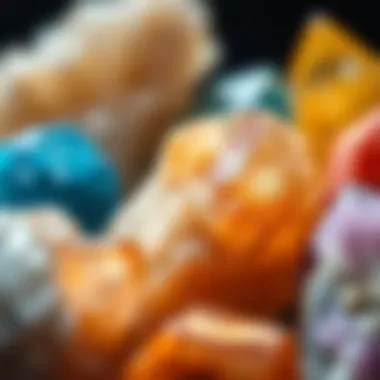
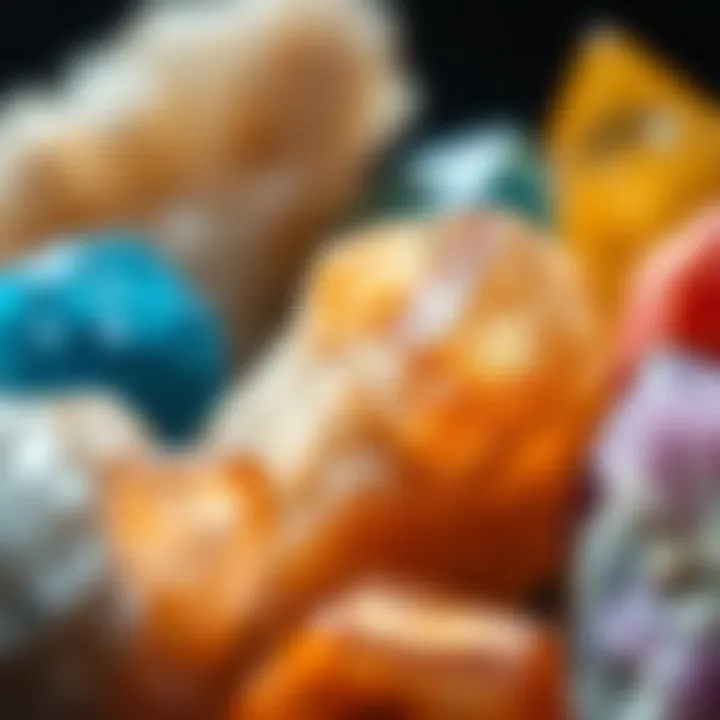
Intro
Crystals captivate enthusiasts and collectors alike. For some, they hold sentimental value; for others, they represent unique geological processes over millions of years. Understanding how to identify these minerals not only enhances appreciation but also fosters a connection to the earth’s history.
Many people dabble in collecting crystals, each acquisition sparking curiosity about its origin, composition, and proper care. As you peel back the layers of knowledge, you'll find your relationship with your collection deepening. In this guide, we aim to demystify the process of identification, offering a detailed roadmap to effectively understand and appreciate your crystals.
Through a combination of scientific methodology and accessible language, we’ll explore various aspects of crystal identification. This will empower not only beginners but also seasoned collectors eager to widen their knowledge base. Let’s embark on this journey to unveil the hidden stories behind each piece in your collection.
Featured Collectible of the Month
Overview
This month, we spotlight Amethyst, a striking variety of quartz known for its captivating purple hue. The deep shades of violet can range from pale lavender to a dark, rich purple, creating a visual feast for the eyes. Amethyst not only stands out due to its aesthetic appeal but also holds a significant place within folklore and tradition.
Historical Significance
Historically, Amethyst has been revered across various cultures. The ancient Greeks believed it offered protection against intoxication and was often carved into cups. In medieval Europe, this crystal was used by bishops to signify their spiritual authority. Understanding these historical contexts enriches our appreciation of Amethyst, giving it layers of meaning beyond its physical beauty.
Identification Techniques
Visual Characteristics
When identifying crystals, visual characteristics serve as the first line of assessment. Look closely at:
- Color: Amethyst’s signature hue can give immediate clues to its type. However, take note of saturation and patterns as well.
- Clarity: Is the stone clear or cloudy? Many crystals' transparency affects their valuation.
- Shape: Crystals can appear in various formations. Amethyst often presents as pointed terminations or in clusters.
It’s essential to remember that color alone can be misleading, as some stones resemble one another. To sharpen your identification skills, consider comparing your specimen with reputable resources.
Resources for Identification
A wealth of resources is at your fingertips to further your crystal identification journey. Here are some noteworthy ones:
- Mindat.org: A comprehensive database offering extensive mineral information.
- Gem Rock Auctions: Useful for learning about gemstone properties and visuals.
- The Crystal Bible: A well-regarded book that covers various crystals, including identification characteristics.
Further exploration through forums like Reddit will connect you with a community of collectors and experts eager to share their insights.
"The beauty of crystals lies not only in their stunning formations but also in the narratives they whisper through their existence."
As you delve deeper into the wonderful world of crystals, remember that each stone is a puzzle waiting to be solved. Your journey into identification could unravel more than just their names—it could lead you to understand the very nature of earth and time.
Crystals and Their Fascination
Crystals have always captivated the human imagination. Their beauty and mysterious allure offer much more than just eye-catching aesthetics. In this context, crystals hold a multifaceted significance that touches upon scientific, spiritual, and artistic domains. By investigating the intricate world of crystals, enthusiasts can uncover a treasure trove of knowledge and appreciation, which is vital for any collector.
Defining Crystals
Crystals are solid materials whose constituents, such as atoms or molecules, are arranged in a highly ordered, repeating pattern. This regular structure is what creates their unique shapes and optical properties. In essence, when we refer to crystals, you can think of them as nature's way of demonstrating order and symmetry in the chaos of the natural world. Some may find themselves drawn to crystals due to their fascinating forms—ranging from simple cubes to complex prisms and beyond.
Understanding what crystals are also enables collectors to appreciate their geological origins. Various conditions, such as temperature and pressure, contribute to their formation. For rock hounds, knowing these conditions can help piece together the environmental history of the crystals they collect. Besides, identification of crystals based on their definitions lays a foundation for utilizing the correct methods in the identification process.
Historical Importance of Crystals
Throughout history, crystals have played significant roles in numerous cultures. Ancient civilizations, from the Egyptians to the Chinese, revered crystals for both their beauty and purported metaphysical properties. In the realm of trade, certain crystals became valued commodities, sparking trade routes that connected distant lands
"Crystals were not merely decorative, but held deep-rooted meanings and applications in ancient practices."
Take, for example, the use of lapis lazuli in ancient Babylonian culture as a symbol of royalty and power. This deep blue stone was often used in ornaments and even in the burial of royalty, signifying its high respect. Similarly, quartz has been attributed to healing and protection through centuries, finding a place in various traditional medicine practices.
Understanding the historical context of crystals not only enhances our appreciation but also allows for an enriched narrative that collectors can share. For many, these historical perspectives can turn an ordinary crystal into an artifact, steeped in stories and traditions. Hence, knowing where each crystal fits within the fabric of human culture adds another dimension to collecting—not just the physical beauty, but the emotional and historical significance embedded in each piece.
Importance of Identification
Understanding how to identify crystals and the importance of this knowledge cannot be overstated. Identifying crystals accurately not only elevates your appreciation of these mesmerizing stones, but it also plays a pivotal role in various applications—from healing practices to scientific exploration.
Why Identifying Crystals Matters
Identifying crystals matters for a number of compelling reasons. First off, knowing what kind of crystal you possess opens the door to understanding its unique properties and benefits.
For instance, if you own a piece of citrine, recognizing its qualities will help you harness its purported abilities to boost prosperity and creativity. On the other hand, if you're unaware of the stone's identity, you could easily overlook its potential benefits and simply see it as pretty decoration.
Additionally, accurate identification supports ethical practices in collection and trade. By knowing whether a crystal is ethically sourced or if it's a synthetic variant, collectors can make informed decisions and avoid inadvertently supporting harmful mining practices.
Ultimately, being adept at identification empowers collectors and enthusiasts alike. It helps build a deeper connection to the crystals, allowing you to engage more fully with both their physical and metaphysical attributes, contributing to a fuller exploration of your crystal journey.
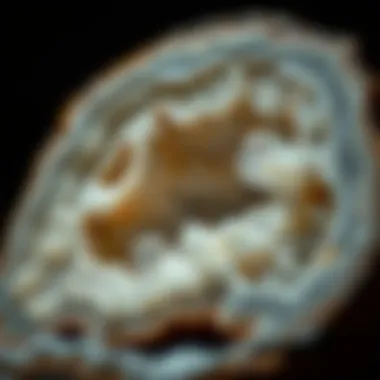
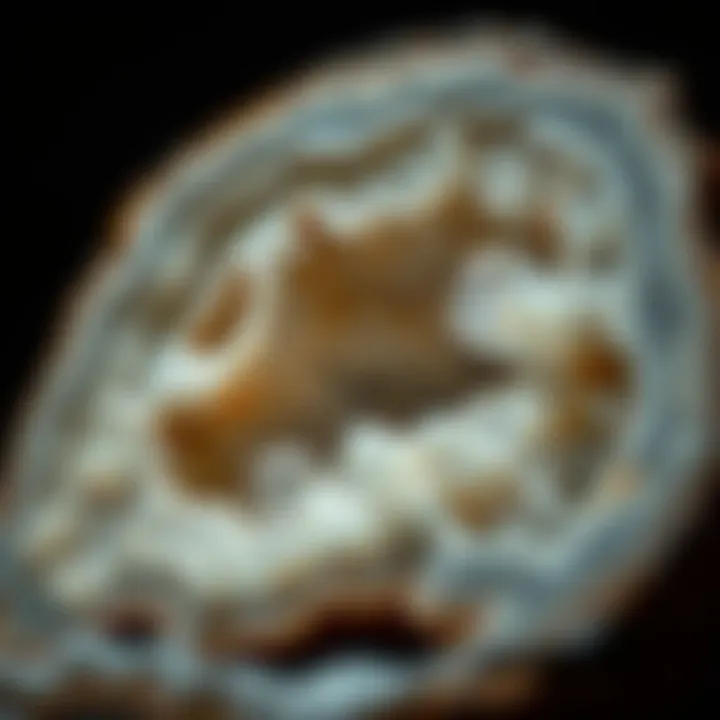
Uses of Crystals in Different Fields
Crystals are not just pretty rocks; they hold significant value across various domains, showcasing their versatility and importance.
- Healing & Wellness: In alternative medicine, practitioners offer crystal healing sessions, with specific stones believed to tune the body’s energy. For example, amethyst is often lauded for its calming properties, while rose quartz is associated with love and emotional healing.
- Jewelry & Art: Unique stones are often transformed into beautiful jewelry or art pieces. Identifying stones accurately allows artists to create pieces that resonate with certain aesthetics or emotional themes. This has commercial implications, too, as unique crystals can fetch higher prices in artistic marketplaces.
- Geological Research: In academia or professional geology, accurate crystal identification contributes to mineralogical studies, helping us understand earth processes and the history of our planet. Recognizing a quartz or a feldspar allows scientists to draw conclusions about geological environments and formation conditions.
- Collectibles: For collectors, the value of a crystal often hinges on its rarity and quality. Knowing how to identify such traits can mean the difference between a valuable find and a piece of ordinary rock. Collectors frequently depend on their knowledge to seek and acquire unique specimens.
Methods for Crystal Identification
Understanding how to identify crystals opens a world of wonder and appreciation for collectors and enthusiasts alike. The methods for crystal identification are not merely academic exercises; they serve as the foundation for understanding the unique beauty and properties of these minerals. This article will elucidate techniques that vary from simple visual inspections to more sophisticated chemical tests. By harnessing these methodologies, enthusiasts can effectively differentiate between various types of crystals, ensuring a richer connection with their collections.
Visual Inspection Techniques
Visual inspection strikes at the heart of initial crystal identification. It's often the first step in recognizing the distinctive features that define minerals. This method is simple yet rich in detail, allowing collectors to start their journey with just their eyes and perhaps a good light source.
Examining Color
Color is often the first characteristic a collector notices. It provides immediate visual impact but can also be misleading due to impurities or variations within the crystal. For example, a piece of amethyst is easily recognized by its violet hue; however, natural variances can lead one to misidentify it as another mineral due to color alone.
Key features in examining color include:
- The hue, which describes the primary color present.
- The saturation, indicating the intensity of that color.
- Any color zoning or banding that might occur.
While using color is a popular choice for novices, it does have its drawbacks. Some minerals can appear similar in color—like citrine and smoky quartz—which can lead to confusion if one relies on this aspect alone.
Assessing Clarity and Transparency
Clarity pertains to the absence of inclusions or blemishes within a crystal, and transparency describes how light passes through it. Crystals like clear quartz are vastly different from opaque stones, providing critical identifiers. A crystal’s clarity can hint at its quality, which is often vital for collectors interested in gem-quality stones.
Key points to consider include:
- Crystals can range from transparent to translucent or opaque.
- Inclusions can add beauty but may also diminish value.
Assessing clarity and transparency can be immensely helpful when distinguishing between crystals that appear similar. However, poor lighting conditions might hinder this evaluation.
Identifying Crystal Shape
The geometric form of a crystal reflects its internal structure, revealing a wealth of information helpful for identification. This aspect involves recognizing distinct crystal habits, such as cubic, prismatic, or fibrous shapes. For example, pyrite often forms cubes, making it easy to spot among other mineral specimens.
Consider the following:
- Crystal habits may vary even within the same mineral species.
- Additional features, like the presence of striations or terminations, can aid in identification.
Understanding crystal shapes is typically beneficial, but it requires a keen observational skill. Some crystals may not exhibit their typical shape due to environmental conditions, making it a less reliable method in those cases.
Physical Properties to Observe
Beyond visual techniques, tangible physical properties form another layer of understanding. They offer measurable attributes that can discern subtle differences between minerals. This half of the identification process adds scientific rigor that enthusiasts appreciate.
Hardness Testing
The hardness of a crystal, categorized on the Mohs scale, indicates how well a mineral can resist scratches. It ranges from talc (1) to diamond (10), providing a measurable benchmark for collectors. Testing is straightforward: use objects of known hardness to scratch the crystal.
This technique is treasured for its simplicity and reliability. For instance, if your specimen can scratch glass, it is likely harder than 5.5. The advantage lies in its reproducibility; once a method is established, the same result should yield consistent identification. However, the downside is that minerals with similar hardness can create ambiguities.
Specific Gravity Assessment
Specific gravity assesses how heavy a crystal is compared to water, providing a secondary identification metric. This testing method involves weighing the crystal in air and then submerging it in water to determine displacement. This can help differentiate between minerals that may look alike.
Key features include:
- Specific gravity values can pinpoint minerals within a narrow range.
- This method often separates crystals that seem the same on visual inspection.
Despite its insightful outcomes, it requires precise measurements and the right tools, which might intimidate some collectors.
Chemical Tests for Further Clarity
When you're deep into the identification process, chemical tests can shed light on lingering uncertainties. These methods delve into the crystal's composition and answer questions that visual or physical tests alone can't address.
Acid Test
By applying a drop of hydrochloric acid (HCl) to certain minerals, like calcite, you can observe an immediate reaction in the form of fizzing. This is due to the calcite reacting with the acid, releasing carbon dioxide gas, and it’s a quick way to identify calcium carbonate.
The acid test is both straightforward and specific, making it a favored choice when attempting to identify carbonate minerals. Nevertheless, it can damage the specimen if misapplied, so care is necessary.


Streak Test
The streak test involves rubbing a crystal across an unglazed porcelain tile to reveal the color of its powder. This technique is vital for identifying minerals that share a similar outer appearance but differ internally. For instance, hematite leaves a reddish-brown streak, regardless of its metallic luster.
The advantage of the streak test lies in its ability to overcome misleading surface colors; however, it’s more effective on opaque materials. Not all minerals can yield a streak, which can limit its application in certain scenarios.
Utilizing Resources for Crystal Identification
In the ever-expanding world of crystal collection, knowing how to identify various crystals is crucial for any enthusiast. Utilizing a blend of physical and digital resources not only enhances the process of identification but also broadens the understanding of the characteristics and classifications of different crystals. This section delves into the myriad options available to collectors, from printed literature to technology-driven solutions, and discusses how each contributes to effective crystal identification.
Books and Texts for Reference
Books and reference texts are invaluable resources for anyone serious about crystal identification. They serve as foundational tools, providing detailed descriptions, photographs, and classifications of various minerals.
Field Guides
Field guides are like breadcrumbs on the path of discovery for aspiring mineralogists. Typically compact and practical, these guides focus on specific regions or types of crystals. A notable aspect is that they often include visual aids and concise descriptions, allowing users to quickly identify crystals in natural settings. The ease of carrying a field guide on trips makes it a popular choice among collectors and hobbyists alike.
One of the key characteristics of field guides is their emphasis on locality. They often detail where to find specific crystals, which can be helpful for both novice and experienced collectors looking to expand their collections. The advantages include the immediate accessibility of information and the focused content on regional minerals; however, a disadvantage is that some field guides may not delve deeply into photographic clarity or might omit lesser-known crystal types.
Identification Manuals
Identification manuals represent a more comprehensive approach to crystal identification. These manuals typically offer extensive information covering a wide array of mineral types, complete with photographs and specialized charts for reference. A defining feature of such manuals is their structured format that allows readers to cross-reference different properties, making them highly effective for detailed identification.
Identification manuals are favorable due to their thorough exploration of characteristics like hardness and luster, which can greatly aid in discerning similar minerals. However, the downside is that their breadth might be overwhelming for beginners, who may find the volume of information difficult to digest.
Online Databases and Apps
In today’s digital age, online resources and applications have revolutionized the way collectors approach crystal identification. They provide instant access to a wealth of information at the touch of a button.
Mobile Applications for Identification
Mobile applications tailored for crystal identification have surged in popularity, thanks in part to their convenience and up-to-date content. The most intriguing aspect of these applications is the integration of features such as augmented reality, which can aid in identifying crystals by allowing users to take pictures and receive immediate feedback on the type of crystal. This innovative approach not only simplifies the process but also enhances the overall experience of engaging with minerals.
They are beneficial because they allow collectors to carry an entire library of information in their pockets, while also offering features like community-driven insights and ratings. One potential drawback, though, is that reliance on technology may sometimes overshadow hands-on learning, which is crucial for gaining practical identification skills.
Web Resources and Databases
Web resources and databases constitute another critical layer for crystal identification. Websites often host extensive databases containing images, descriptions, and identification criteria for countless minerals. For instance, platforms such as Mindat.org provide a collaborative space where enthusiasts can share their findings and contribute to the knowledge base.
The strength of these online resources lies in their vast repositories of information that can be updated frequently, ensuring accuracy and relevance. They grant access to numerous expert-written articles and user-generated content, making them a superb tool for learning. The downside, however, is that not all online content is curated rigorously, so discerning quality information from unreliable sources becomes an essential skill for readers.
"One of the best tools a mineral collector can have is the combination of traditional books and modern technology; both play unique roles in crafting a well-rounded understanding of minerals across the globe."
By leveraging both print and digital resources, crystal enthusiasts can enhance their ability to identify their specimens, enrich their knowledge, and ultimately foster a deeper appreciation for the intricate world of crystals.
Exploring Crystal Families
Understanding crystal families serves as a keystone in the journey of identifying your crystals. Each family showcases distinct characteristics, which, in turn, define their behavior and potential uses. Recognizing these families enables enthusiasts to appreciate not just the aesthetics of the crystals but also their unique properties, occurrences, and practical applications within various fields. Exploring this topic allows for a deeper connection between collectors and their specimens, making the identification process more enriching.
Common Crystal Types
Quartz Family
The Quartz family stands out prominently in the crystal realm for its versatility and abundance. One key characteristic is its hexagonal crystal structure, which leads to a variety of forms, from clear rock crystals to colorful amethysts. The popularity of Quartz is largely due to its accessibility and various applications, both in spiritual practices and in scientific fields.
This family is beneficial for collectors because it consists of many varieties, each with distinct colors and properties. For instance, Clear Quartz is often touted for its amplification qualities, making it a sought-after choice for meditation and healing purposes.
One unique feature of the Quartz family is its piezoelectric properties. This means it can generate an electric charge in response to applied mechanical stress. That particular characteristic opens the door to its use in technology, such as in watches and radios. However, collectors should be aware that not all Quartz specimens are equal; some might lack clarity or exhibit inclusions that can affect their aesthetic value.
Feldspar Group
The Feldspar group is another significant family in the crystal world, known for its abundance in Earth's crust. One of its key characteristics is the ability to display a range of colors, from pink and white to green and even blue, depending on the specific type of Feldspar.
Feldspar is a beneficial choice for collectors given its widespread occurrence and variety. That means enthusiasts can find different types and shades without worrying about scarcity. The brilliance and sheen of some Feldspar varieties, like Labradorite, can captivate the eye and draw interest in a collection.
A unique feature of the Feldspar group is its use in ceramic and glass manufacturing, highlighting its practical applications beyond ornamental use. However, collectors should note that while Feldspar can be visually stunning, it tends to be softer than Quartz, making it more prone to scratching and requiring a bit more care in handling.
Rare and Collectible Crystals
Exploring rare and collectible crystals invites enthusiasts into a world where uniqueness takes center stage. These specimens often capture the imagination due to their limited availability and striking features.
Minerals with Unique Characteristics
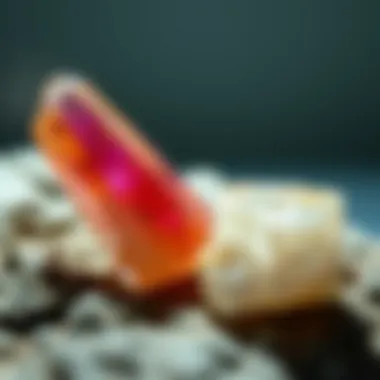
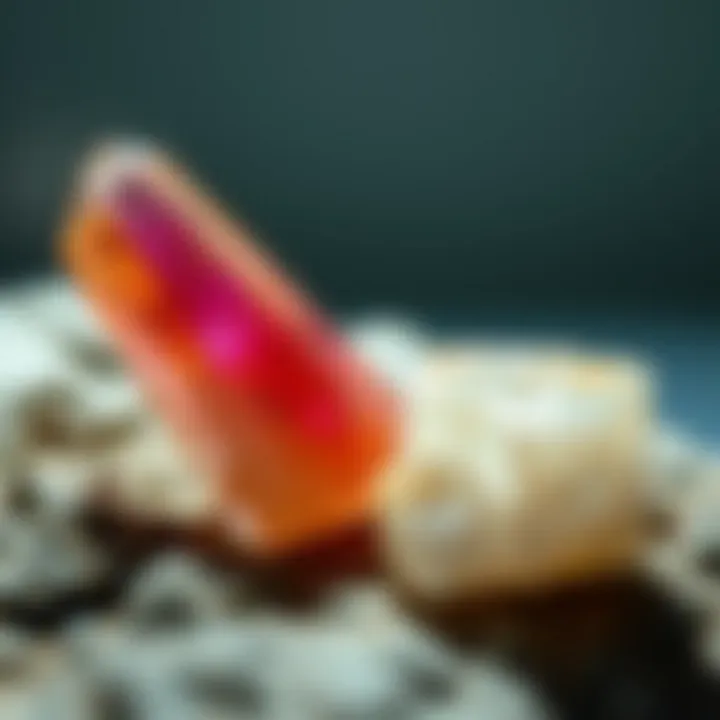
Minerals with unique characteristics, such as tourmalinated quartz or blue kyanite, deserve special attention for their allure. Their specific compositions lead to fascinating appearances and attributes. For example, tourmalinated quartz combines both clear quartz and black tourmaline, creating a stunning visual contrast that also harnesses the metaphysical properties of both minerals.
These unique combinations make them a popular choice, especially among collectors seeking to add something distinctly different to their collections. However, enthusiasts should exercise caution; rarity can also mean higher prices and the likelihood of encountering fraudulent replicas in the market.
Valuable Gemstones
Switching gears to valuable gemstones, these crystals often come loaded with history and status. Stones like emerald, ruby, and sapphire are not just visually striking; they carry significant monetary value and cultural significance. Their appeal lies not only in their beauty but also in their rarity and the craftsmanship involved in bringing out their luster.
Considering their unique characteristics, valuable gemstones become focal points in any collection. However, prospective buyers should be well-informed about authenticity and grading standards to ensure they invest wisely. Furthermore, the market can be fickle; the prices may fluctuate based on trends and economic factors.
When collectors embark on their journey to explore these families of crystals, they gain not only knowledge but also a grounded appreciation for Earth’s geological treasures.
Practical Tips for Care and Preservation
Taking care of your crystals goes beyond mere aesthetics; it plays a crucial role in maintaining their integrity and vibrancy. When one invests in precious stones, whether for personal collection or healing purposes, understanding how to handle and preserve them becomes vital. Proper care not only maximizes the crystals' life span but also ensures that their natural beauty remains intact, allowing them to impart their energies and attributes effectively.
Handling Crystals Properly
The moment you lay your hands on a crystal, you're entering into a dialogue with its essence. But just like any delicate item, crystals require gentle handling. Here are some practical ways to ensure you don’t inadvertently damage them:
- Use Clean Hands: Always handle crystals with clean and dry hands. Oils, dirt, or moisture can dull the surface and affect any inherent patterns or colors.
- Mind the Weight: Some crystals can be surprisingly heavy, like large specimens of quartz or amethyst. When transporting or moving them, ensure you're lifting them securely to avoid accidental drops.
- Avoid Bumping: Crystals can chip or crack upon impact. So, be cautious of your surroundings to prevent them from colliding with hard surfaces or other objects.
In this context, it's also wise to remember that some crystals are more fragile than others. For instance, selenite and calcite are known to be softer and can scratch easily. Therefore, wisdom dictates differing handling techniques based on the specific type of crystal.
Cleaning and Storing Crystals
Once you've handled your crystals, cleaning them is the next logical step. Keeping them clean will not only enhance their appearance but also help maintain their energetic properties. Each cleaning method should cater to the particular type of crystal, taking into account their unique characteristics:
- Gentle Washing with Water: For many crystals, especially sturdy ones like clear quartz, a simple rinse under lukewarm water can be effective. Yet, always check if they are water-safe, as there are exceptions like selenite that can dissolve.
- Using a Soft Brush: For those nooks and crannies that are often hard to reach, a soft-bristled toothbrush can be extremely useful.
- Avoid Chemical Cleaners: Many store-bought cleaners can contain abrasives that scratch the surface or chemicals that strip away the natural essence of the crystal. Stick to natural methods whenever possible.
When it comes to storage, how you place your crystals matters just as much as how you clean them:
- Separate Containers: Store crystals in separate compartments or pouches to avoid scratches and damage. This is particularly crucial for delicate specimens.
- Stable Environment: Keep your crystals in a space away from direct sunlight and dramatic temperature swings, which can cause cracking or fading. A cool, dry spot is ideal.
- Regular Checkups: Periodically assess your collection for any changes. Stones can lose their luster over time, so being proactive allows you to address any issues before they escalate.
By understanding how to care for and preserve your crystals, you're not just maintaining a collection; you're nurturing a connection to the earth's natural treasures.
This guidance enhances your experience, allowing you to fully appreciate the vibrant world of your crystals while safeguarding their physical and energetic forms.
Engaging with the Community
Connecting with other crystal enthusiasts can transform your journey from a solitary hobby into something vibrant and rewarding. Engaging with the community around crystals isn't just about gaining knowledge; it's about sharing experiences, discoveries, and the joy that these beautiful minerals can bring into our lives. By interacting with like-minded individuals, you cultivate a deeper understanding of crystals while building friendships that may last a lifetime.
Joining Collectors’ Groups
One of the most enriching experiences in the world of crystals is becoming part of collectors’ groups. These groups often gather both in person and online, giving a platform for members to exchange insights and stories about their collections. Notably, websites like Facebook and Reddit have bustling communities where enthusiasts share tips and showcase their finds.
Here’s why you should consider joining these groups:
- Knowledge Exchange: Members come from various backgrounds and levels of expertise. This diversity allows for a rich sharing of information, from simple identification tricks to advanced geological data.
- Networking Opportunity: Connecting with other collectors can lead to fruitful collaborations or trade opportunities. You may find individuals with rare specimens willing to engage in swaps, or simply folks who can direct you to reputable dealers.
- Support System: A community serves as a support network. Whether you're troubleshooting a purchase headache or seeking advice about care methods, having people to turn to can make a world of difference.
Participating in Events and Fairs
Events and fairs dedicated to minerals and crystals present an excellent opportunity to engage further with the community. These occasions are not just venues for purchasing; they are educational hubs bustling with enthusiasm and knowledge.
At these events, you will:
- Interact Directly: Face-to-face interactions with expert dealers or fellow collectors can provide insights that digital platforms lack. Conversations about specific crystals often lead to deeper understanding and appreciation.
- Attend Workshops: Such events frequently include workshops or presentations. You could learn about advanced identification techniques or hear from professionals about their field experiences.
- Explore Varieties: The varied selection of crystals available at these fairs allows you to explore new types, which could expand your collection significantly. It’s rather exhilarating to stumble upon minerals you’ve only read about.
Engagement with the community can be the bridge between simply owning crystals and truly understanding them. Take the plunge into local groups or search for upcoming fairs in your area. Embrace the opportunity to interact, learn, and share your passion, as the community often holds invaluable experiences waiting to be uncovered.
Culmination
In the realm of crystal collecting, understanding how to identify your specimens is more than just a methodical approach; it’s a vital part of your collecting journey. The process itself can be seen as a tour of discovery, where each crystal tells its own story, enriched by its composition, history, and distinct characteristics. This final section emphasizes why taking the time to delve into the identification of your crystals is profoundly beneficial.
Emphasizing the Journey of Discovery
Identifying crystals isn't merely a task—it’s an exploration that deepens your appreciation for the natural world. When you learn about the properties that distinguish one crystal from another, you enhance your connection to the earth. Here are some key aspects to consider:
- Each crystal embodies a unique history, from its formation under pressure deep within the earth to its uncovering by curious hands.
- Appreciating the differences among crystals can foster a more nuanced understanding of geology, which complements both amateur interest and professional study.
"The beauty of a crystal lies not just in its appearance but in the rich tapestry of its geological journey."
Diving into the identification process brings a sense of accomplishment. Recognizing your specimens empowers you, giving each piece in your collection a meaning rooted in its identity. Whether you're drawn to the soothing qualities of amethyst or the vibrant hues of citrine, knowing what you have enriches your experience.
It's also essential to acknowledge the community aspect of crystal collecting. Engaging with fellow enthusiasts can reveal diverse methods and insights on identification, leading to greater knowledge and richer discussions. Meeting others at fairs or joining local clubs can provide additional layers of context around your discoveries.
Furthermore, understanding the practical applications of different crystals—whether in wellness, art or technology—adds another dimension to your collecting. Each time you identify a new piece, you are participating in a larger narrative that spans cultures and eras.
Ultimately, your journey of crystal discovery aligns with personal growth and lifelong learning. The more you explore, the more you discover about the world around you, making the process incredibly rewarding. So take your time—embrace each step of identification, and let each crystal remind you of the beauty of nature's wonders.



